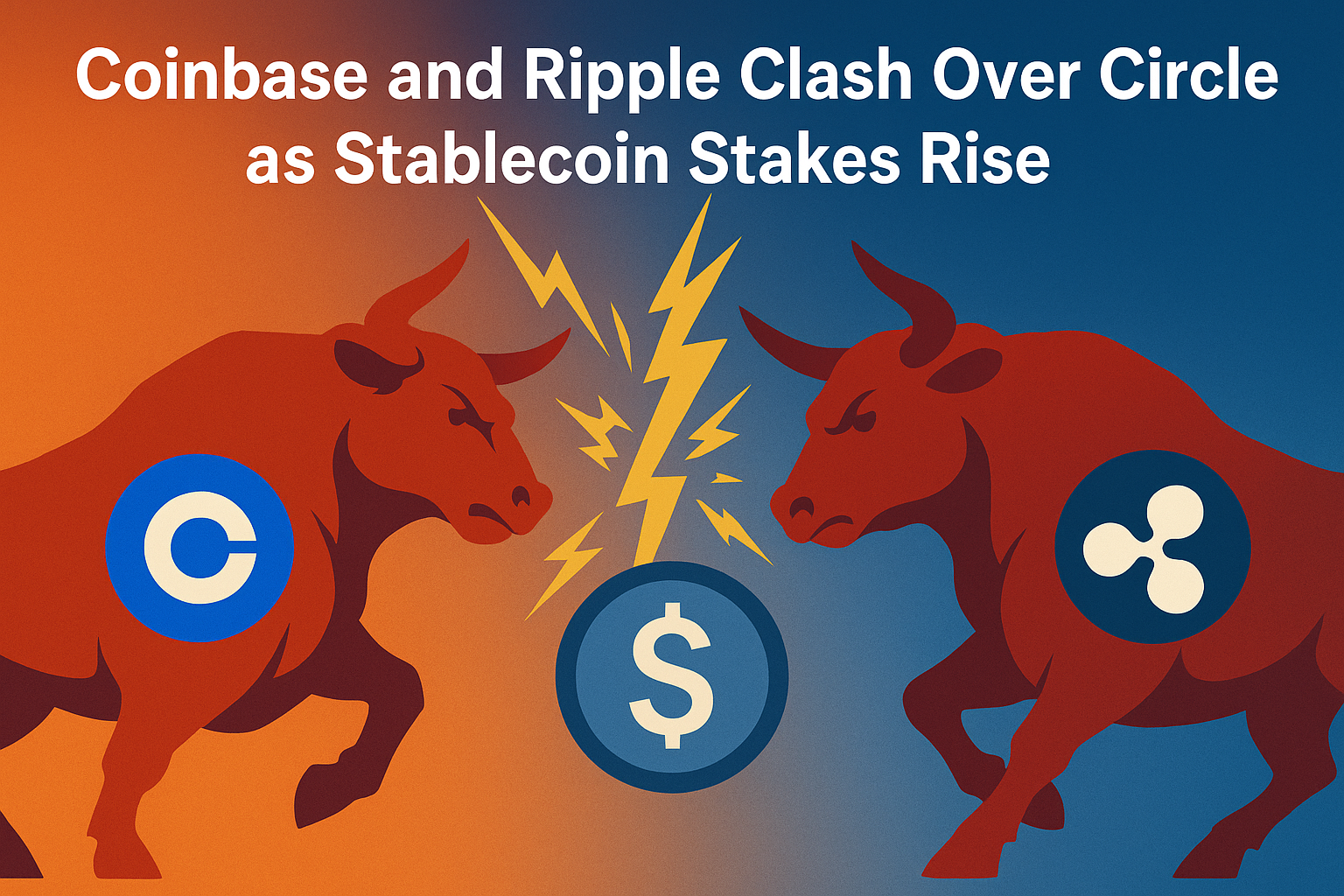
Circle in the Acquisition Crossfire
The race to control Circle, the issuer behind the USDC stablecoin, is intensifying. Recent reports from Fortune reveal that Coinbase, the U.S.-based crypto exchange giant, has shown interest in acquiring Circle at a potential valuation of $5 billion. This development follows Bloomberg’s earlier revelation that Ripple had already made a $4–$5 billion bid, which was ultimately declined by Circle.
Circle, meanwhile, is pressing forward with plans for a public listing. It published its IPO prospectus on April 1, just a day before an unexpected policy announcement from former President Trump disrupted financial markets. This marks Circle’s second attempt to go public, following its abandoned SPAC merger in 2022 after the FTX collapse rattled crypto confidence.
An unnamed banker cited by Fortune suggested that Circle would welcome a Coinbase acquisition: “If Coinbase wanted to buy them, Circle would sell in a heartbeat.” Still, Circle maintains its official stance: it’s pursuing an IPO, not an acquisition—at least for now.
Strategic Depth Behind the Bids
For Coinbase, buying Circle is more than an expansion—it’s about securing a critical revenue stream and strengthening its hold on the stablecoin ecosystem. Coinbase already benefits significantly from USDC; in 2024 alone, the company earned approximately $910 million from interest on the reserves backing the stablecoin. This figure is part of a revenue-sharing agreement between the two firms, born from their former co-governance of the USDC through the Centre Consortium.
Despite Centre’s dissolution, the business ties between Coinbase and Circle remain deep. Acquiring Circle would allow Coinbase to consolidate a stable, growing source of income while eliminating uncertainty over the long-term future of their revenue-sharing arrangement.
In contrast, Ripple’s interest is likely rooted in its ambitions to dominate the cross-border payments landscape. Circle’s infrastructure and distribution network could accelerate Ripple’s expansion into stablecoin-backed international transactions. Ripple has already announced a U.S. dollar-backed stablecoin and is building partnerships—including one with Societe Generale’s FORGE and another with StraitsX to issue euro and Singapore dollar stablecoins on the XRP Ledger.
However, Ripple may not have the same financial freedom. Using large amounts of XRP to finance an acquisition could risk price destabilization, given XRP’s market volatility. In contrast, Coinbase enjoys a cash reserve of roughly $8 billion and the strategic advantage of being part of the S&P 500, offering both liquidity and investor appeal that Ripple might struggle to match.
Timing May Tip the Balance
Despite their interest, both Coinbase and Ripple face timing-related constraints. Ripple recently committed $1.25 billion to acquire Hidden Road, a digital asset prime brokerage. Coinbase, meanwhile, agreed to purchase Deribit, a crypto derivatives exchange, for $2.9 billion. On top of that, Coinbase is addressing a recent customer data breach, which could result in up to $400 million in remediation costs.
These recent financial moves stretch each firm’s bandwidth—both managerial and monetary—potentially complicating any immediate plans to acquire Circle. In that light, Circle’s IPO might remain the more straightforward route for now, especially if market conditions stabilize.
However, should Circle’s public listing falter amid continued market turbulence, it could reignite acquisition talks—especially if either Coinbase or Ripple sees an opportunity to swoop in at a more favorable valuation.
Implications for Stablecoin Market
The outcome of this bidding interest is poised to significantly impact the broader stablecoin ecosystem. USDC is currently the second-largest stablecoin by market capitalization, and any change in its governance or ownership will ripple across the digital asset space.
If Coinbase emerges successful, USDC could become more tightly integrated with the company’s broader offerings—especially beneficial for mainstream adoption in decentralized finance (DeFi) and traditional finance interfaces. Alternatively, if Ripple were to acquire Circle, it would be a game-changer for global crypto remittances and Ripple’s stablecoin ambitions, effectively placing USDC at the heart of its cross-border payment solutions.
Whether Circle chooses independence through an IPO or gets absorbed into the portfolio of a larger crypto player, its path forward will set the tone for the future of stablecoins. Either outcome could usher in a new phase of competition, innovation, and consolidation in the digital financial ecosystem.

